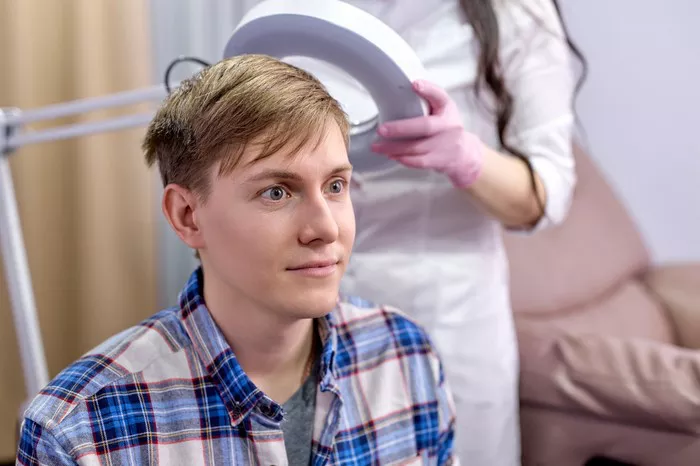Hair transplantation is a highly effective solution for individuals dealing with hair loss, offering natural-looking results and a boost in confidence. However, the recovery process is just as important as the procedure itself. One of the most common concerns among patients is the formation and removal of scabs after a hair transplant. This article provides a detailed guide on when and how to safely remove scabs, ensuring the best possible outcome and a smooth recovery.
Introduction to Hair Transplant Recovery
Hair transplantation involves surgically moving hair follicles from one part of the scalp (the donor area) to another part (the recipient area). The procedure is typically performed under local anesthesia and can take several hours, depending on the number of grafts being transplanted. Recovery is a crucial phase that requires careful attention to ensure the best possible outcomes.
Understanding Scab Formation
After a hair transplant, the scalp naturally forms scabs over the transplanted areas. These scabs are a normal part of the healing process and serve to protect the new hair follicles as they integrate into the scalp. Scabs typically appear within the first few days after the procedure and can last up to two weeks. During this time, it is essential to follow specific guidelines to ensure the scabs do not interfere with the healing process.
Immediate Post-Transplant Period (0-7 Days)
Scab Formation
- Day 1-3: Within the first few days, small crusts or scabs will begin to form over the transplanted areas. These scabs are usually light brown or dark brown and can vary in size.
- Day 4-7: The scabs will become more noticeable and may start to flake or peel. It is important to resist the urge to pick or scratch at the scabs, as this can dislodge the transplanted hair follicles and lead to poor results.
Care Instructions
- Avoid Touching: Do not touch, scratch, or pick at the scabs. This can cause the grafts to fall out prematurely and affect the final result.
- Gentle Cleansing: Follow your surgeon’s instructions for cleaning the scalp. Use a gentle, non-irritating shampoo and avoid scrubbing the scabbed areas.
- Moisturize: Apply a prescribed ointment or moisturizer to keep the scalp hydrated and promote healing. Avoid using harsh chemicals or oils.
Early Recovery Period (8-14 Days)
Scab Shedding
- Natural Shedding: By the eighth day, the scabs will begin to loosen and fall off naturally. This process can take several days and may continue up to two weeks.
- Avoid Forced Removal: Do not attempt to forcibly remove the scabs. Allow them to fall off on their own to ensure the transplanted hair follicles remain in place.
Post-Operative Care
- Continue Gentle Cleansing: Continue to clean the scalp gently with a mild shampoo. Rinse thoroughly to remove any loose scabs or debris.
- Protect the Scalp: Protect the scalp from direct sunlight and extreme temperatures. Wear a hat or use a sunscreen specifically designed for the scalp.
- Avoid Sweating: Minimize activities that cause excessive sweating, as sweat can irritate the scalp and delay the healing process.
Mid-Recovery Period (15-30 Days)
Final Stages of Healing
- Complete Shedding: By the end of the second week, most scabs should have fallen off naturally. If any scabs remain, they will typically fall off within the next few days.
- New Growth: After the scabs have fallen off, you may notice a period of shedding known as “shock loss.” This is a normal part of the healing process and does not indicate failure. The hair follicles are still alive and will regrow.
Ongoing Care
- Regular Cleansing: Continue to cleanse the scalp regularly with a mild shampoo. Gently massage the scalp to stimulate blood flow and promote hair growth.
- Avoid Harsh Products: Avoid using harsh chemicals, dyes, or styling products that can irritate the scalp and affect the healing process.
- Patience: Be patient with the healing process. Hair growth can take several months, and the final results will not be visible until about six to twelve months after the procedure.
Tips for Managing Scabs
Use a Gentle Shampoo
- Non-Irritating Formula: Use a gentle, non-irritating shampoo recommended by your surgeon. Avoid shampoos that contain harsh chemicals or fragrances.
- Proper Technique: Wet your hair and scalp thoroughly. Apply a small amount of shampoo and gently massage the scalp using your fingertips. Rinse thoroughly to remove all traces of shampoo.
Keep the Scalp Moisturized
- Prescribed Ointments: Apply any prescribed ointments or moisturizers to keep the scalp hydrated and promote healing. Avoid using heavy oils or greasy products.
- Humidifier: Consider using a humidifier in your home to maintain optimal humidity levels, which can help prevent the scalp from drying out.
Protect the Scalp from Irritants
- Sun Protection: Protect the scalp from direct sunlight by wearing a hat or using a sunscreen specifically designed for the scalp.
- Avoid Tight Hats: Avoid wearing tight hats or caps that can rub against the scalp and irritate the scabs.
- No Smoking: Avoid smoking, as it can impede the healing process and reduce blood flow to the scalp.
Conclusion: When Can I Remove Scabs After a Hair Transplant?
In conclusion, the formation and natural shedding of scabs are a normal part of the hair transplant recovery process. It is crucial to allow the scabs to fall off naturally and to follow your surgeon’s post-operative care instructions closely. Avoid touching, scratching, or picking at the scabs, and use gentle, non-irritating products to cleanse and moisturize the scalp. By being patient and taking proper care, you can ensure a smooth recovery and achieve the best possible results from your hair transplant.
- Can You Use Hair Fibers After a Hair Transplant?
- What to Expect Two Months After a Hair Transplant?
- What Is DHI Hair Transplant? A Complete Guide


